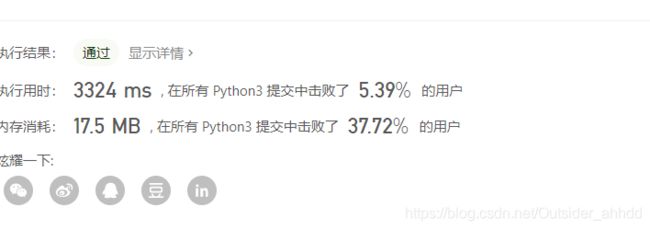992. K 个不同整数的子数组
给定一个正整数数组 A,如果 A 的某个子数组中不同整数的个数恰好为 K,则称 A 的这个连续、不一定独立的子数组为好子数组。
(例如,[1,2,3,1,2] 中有 3 个不同的整数:1,2,以及 3。)
返回 A 中好子数组的数目。
示例 1:
输入:A = [1,2,1,2,3], K = 2
输出:7
解释:恰好由 2 个不同整数组成的子数组:[1,2], [2,1], [1,2], [2,3], [1,2,1], [2,1,2], [1,2,1,2].
示例 2:
输入:A = [1,2,1,3,4], K = 3
输出:3
解释:恰好由 3 个不同整数组成的子数组:[1,2,1,3], [2,1,3], [1,3,4].
提示:
1 <= A.length <= 20000
1 <= A[i] <= A.length
1 <= K <= A.length
思路
双指针(滑动窗口)
本质上是在枚举符合条件的右端点
class Solution:
def subarraysWithKDistinct(self, A: List[int], K: int) -> int:
n = len(A)
counter = collections.defaultdict(lambda: 0)
ans = 0
left, right = 0, 0
while right < n:
counter[A[right]] += 1
right += 1
while len(counter.keys()) > K:
counter[A[left]] -= 1
if counter[A[left]] == 0:
counter.pop(A[left])
left += 1
if len(counter.keys()) == K:
l = left
tmp_cnt = counter.copy()
while len(tmp_cnt.keys()) == K:
# print(A[l:right])
tmp_cnt[A[l]] -= 1
if tmp_cnt[A[l]] == 0:
tmp_cnt.pop(A[l])
l += 1
ans += 1
return ans
